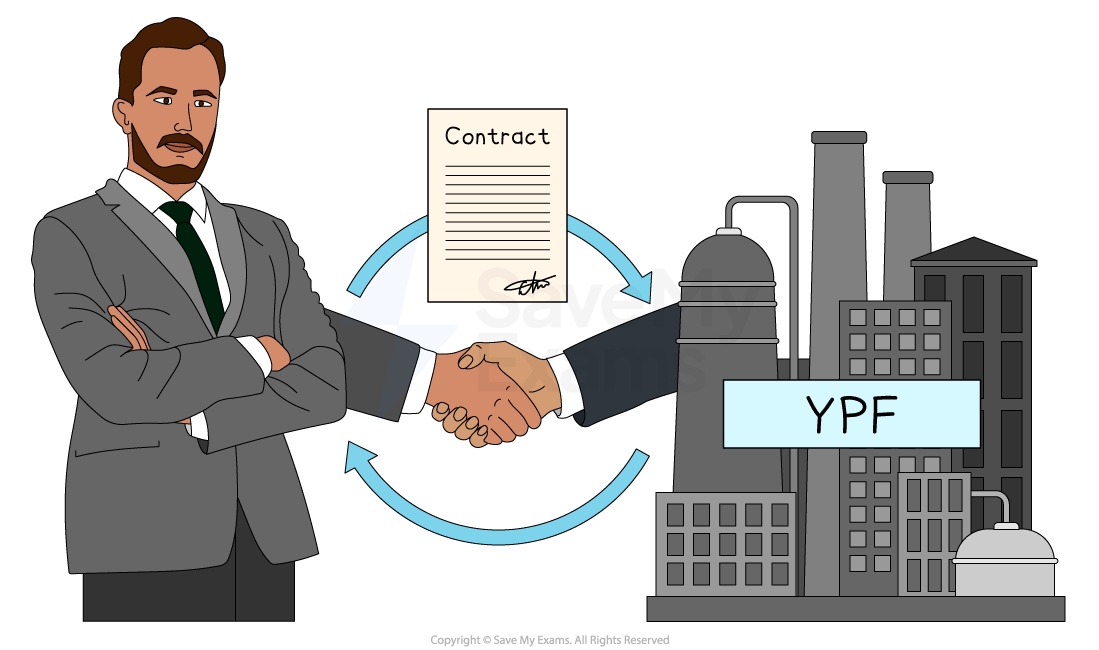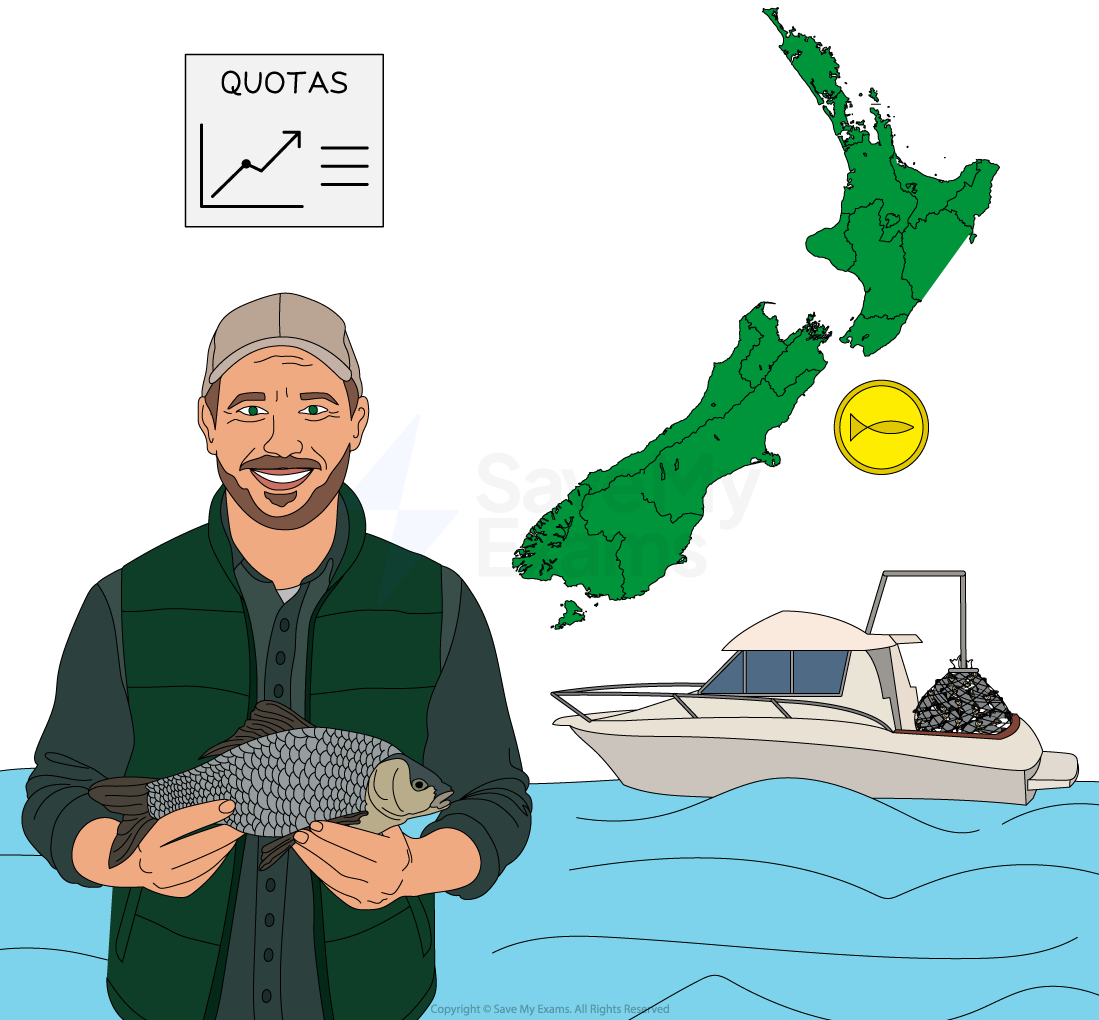Syllabus Edition
First teaching 2025
First exams 2027
Solutions to Market Failure: Other Solutions (Cambridge (CIE) IGCSE Economics): Revision Note
Exam code: 0455 & 0987
Direct provision and regulation
Direct provision of goods and services
Public goods are beneficial for society and are not provided by private firms due to the free rider problem
The government will often step in and provide these goods for its citizens
Examples include roads, parks, lighthouses, national defence
Merit goods are provided by the free market, but they are underprovided so governments will step in to fill the provision gap
The government will often step in and provide these goods for its citizens
Examples include education and healthcare
Evaluating direct provision to solve market failure
Advantages | Disadvantages |
|---|---|
|
|
Regulation
Governments create rules to limit harm from the external costs of consumption/production
They often create regulatory agencies to monitor that the rules are not broken
Evaluating the use of regulation to solve market failure
Advantages | Disadvantages |
|---|---|
|
|
Privatisation and nationalisation
Privatisation
Privatisation occurs when governments transfer ownership and control of firms or assets from the state (public sector) to the private sector (private firms)
Many state firms are monopolies
By privatising them, it encourages more competition in those markets
This may result in more efficiency and lower prices for consumers
Evaluating privatisation to solve market failure
Advantages | Disadvantages |
|---|---|
|
|
Nationalisation
Nationalisation occurs when the government takes control and ownership of firms which were in the private sector
Sometime they will pay to nationalise firms
Other times they will seize the assets and assume ownership
Evaluating nationalisation to solve market failure
Advantages | Disadvantages |
|---|---|
|
|
Case Study
Nationalisation of YPF in Argentina
In 2012, the Argentine government nationalised YPF, the country’s largest oil and gas company, which had previously been majority-owned by the Spanish firm Repsol.

Context
Argentina had been facing energy shortages and a growing dependence on imported fuel
The government accused Repsol of under-investing in oil exploration and production, leading to falling output
The nationalisation
The Argentine state took control of 51% of YPF’s shares
The aim was to increase domestic energy production, reduce reliance on imports, and protect strategic national interests
Benefits (from the government's perspective)
More control over a key industry: Energy is vital to economic stability and growth
Increased public investment: The government could direct funds into exploration and infrastructure
Reduced fuel imports: Boosting domestic output helped reduce Argentina’s trade deficit
Challenges and drawbacks
Legal disputes: Repsol demanded compensation, resulting in a lengthy legal and diplomatic conflict
Reduced foreign investor confidence: Nationalisation created uncertainty for other foreign companies
Mixed performance: While production improved slightly, efficiency and profitability remained issues
Outcome
The nationalisation of YPF shows how governments may intervene in strategic industries to protect national interests
However, it also highlights trade-offs between sovereignty and market efficiency and the potential risks to international investment
Quotas
A quota is a government-imposed limit on the quantity of a good or service that can be produced, consumed or imported over a specific period
Quotas can be used to conserve resources, protect domestic industries or control market outcomes
In the context of natural resources, a quota may limit the amount of extraction (e.g. tonnes of coal or barrels of oil) allowed per year
For example, a government might set a quota of 200,000 tonnes per year on timber extraction to prevent deforestation
Evaluating the use of quotas to solve market failure
Advantages | Disadvantages |
|---|---|
|
|
Case Study
New Zealand’s Fishing Quotas and Natural Resource Management
Context
New Zealand has some of the richest fishing waters in the world. To prevent overfishing, the government introduced a Quota Management System (QMS) in 1986, placing annual limits on how much fish could be caught for each species.
It was designed to conserve stocks, protect biodiversity and ensure long-term industry sustainability

Using quotas
The government set a Total Allowable Catch (TAC) based on scientific data
Each fishery was allocated a quota share, which limited how much they could catch
These quotas were also tradable, allowing fishers to buy or sell unused portions
This system made sure natural resources weren’t overexploited and encouraged more responsible fishing practices
The outcome
Some overfished species like hoki have since recovered to sustainable levels
The industry became more efficient, with fishers investing in better practices
Illegal fishing reduced due to improved monitoring and enforcement
Why It worked
By using quotas to directly control supply, the New Zealand government successfully protected fish stocks, reduced overfishing and balanced economic and environmental goals

Unlock more, it's free!
Did this page help you?